Introduction
Autism Spectrum Disorder (ASD) presents a complex array of challenges that affect social interaction, communication, and behavior. The term "spectrum" aptly captures the wide-ranging manifestations of ASD, highlighting that each individual's experience is unique. From difficulties in understanding social cues and maintaining relationships to repetitive behaviors and sensory sensitivities, the characteristics of ASD vary significantly.
Early diagnosis and tailored interventions, such as Cognitive-Behavioral Therapy (CBT) and Applied Behavior Analysis (ABA), are crucial for enhancing the quality of life. Emerging research continues to explore the intricate brain mechanisms and mental functionalities associated with ASD, aiming to bridge gaps in understanding and improve support strategies. By embracing the diverse capabilities and providing comprehensive support, it becomes possible to navigate the complexities of ASD more effectively, ensuring the well-being of individuals on the spectrum.
Definition and Overview of ASD
Autism Spectrum Disorder (ASD) is a multifaceted neurodevelopmental condition marked by a variety of challenges in interpersonal interaction, communication, and behavior. The term 'spectrum' highlights the broad range of symptoms and abilities found among individuals diagnosed with ASD, indicating that each person experiences the condition uniquely. For instance, some may struggle with social-emotional reciprocity, finding it difficult to initiate or respond to social interactions. 'Nonverbal interaction, such as making eye contact, understanding body language, or using gestures, can also pose significant challenges.'. Additionally, developing and maintaining relationships appropriate to one's developmental level can be particularly tough.
ASD is often accompanied by restricted, repetitive patterns of behavior, interests, or activities. This can manifest as stereotyped or repetitive motor movements, use of objects, or speech. While genetic factors play a significant role in ASD, the intricate mechanisms behind the condition remain only partially understood. Research continues to explore the underlying mental functionalities and brain connections that contribute to ASD, aiming to bridge gaps in our understanding of this complex disorder.
Emerging studies point to the need for a comprehensive theoretical framework to explain the behavioral abnormalities associated with ASD. Recent research also emphasizes the importance of addressing mental health issues such as anxiety and depression, which are more prevalent among people with neurodevelopmental conditions. Cognitive-behavioral therapy (CBT) has shown promise in helping people with ASD learn the connections between thoughts, feelings, and behaviors, thereby improving their overall well-being.
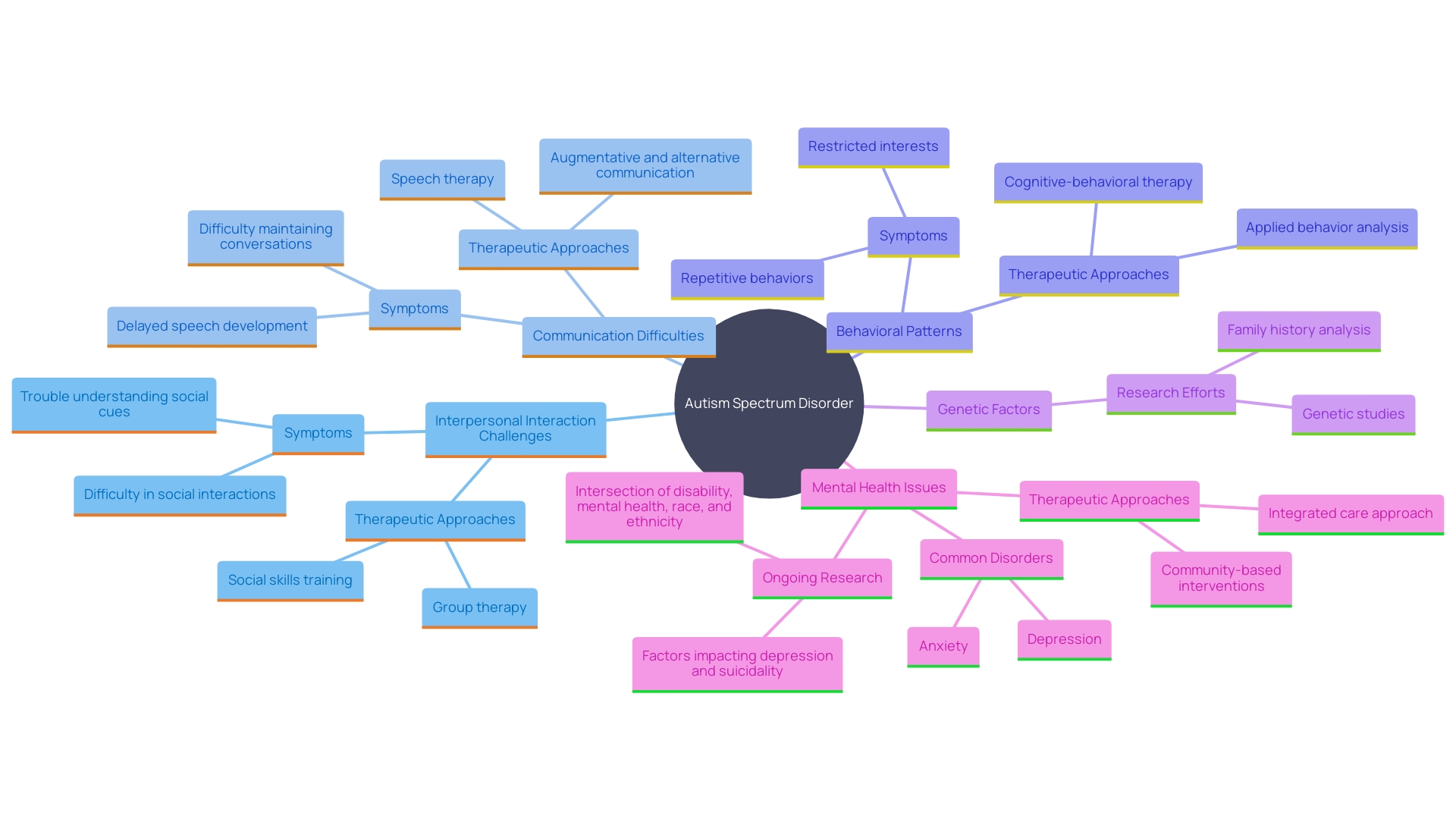
Key Characteristics of ASD
Individuals with Autism Spectrum Disorder (ASD) often display unique characteristics that can vary widely from person to person. Common traits include difficulties in interpersonal interactions and challenges in both verbal and non-verbal communication. For example, some people might struggle with understanding social cues or maintaining eye contact, while others may be non-verbal or have limited speech. Repetitive behaviors, such as hand-flapping or adhering strictly to routines, are also frequently observed.
'Interestingly, many people with ASD possess exceptional strengths.'. Some might have remarkable memory skills or an extraordinary attention to detail. These attributes can be incredibly beneficial in various settings. For instance, a person's meticulous nature might be advantageous in fields that require precision and accuracy, such as data analysis or computer programming.
Emerging research highlights that mental health disorders, such as depression and anxiety, are more prevalent among autistic people compared to the general population. This underscores the importance of comprehensive support systems tailored to the unique needs of those with ASD. Treatment plans often include therapies like Applied Behavior Analysis (ABA), which focuses on enhancing specific behaviors through a structured system of rewards and consequences.
Understanding and embracing the diverse capabilities of individuals with ASD is crucial. Recent studies, like those led by Professors Kenkichi Takase and Eiichi Nojiri, explore the intricate brain connections and mental functionalities associated with ASD. Their work aims to bridge gaps in our understanding of this neurodevelopmental condition, thereby contributing to more effective interventions and support strategies.
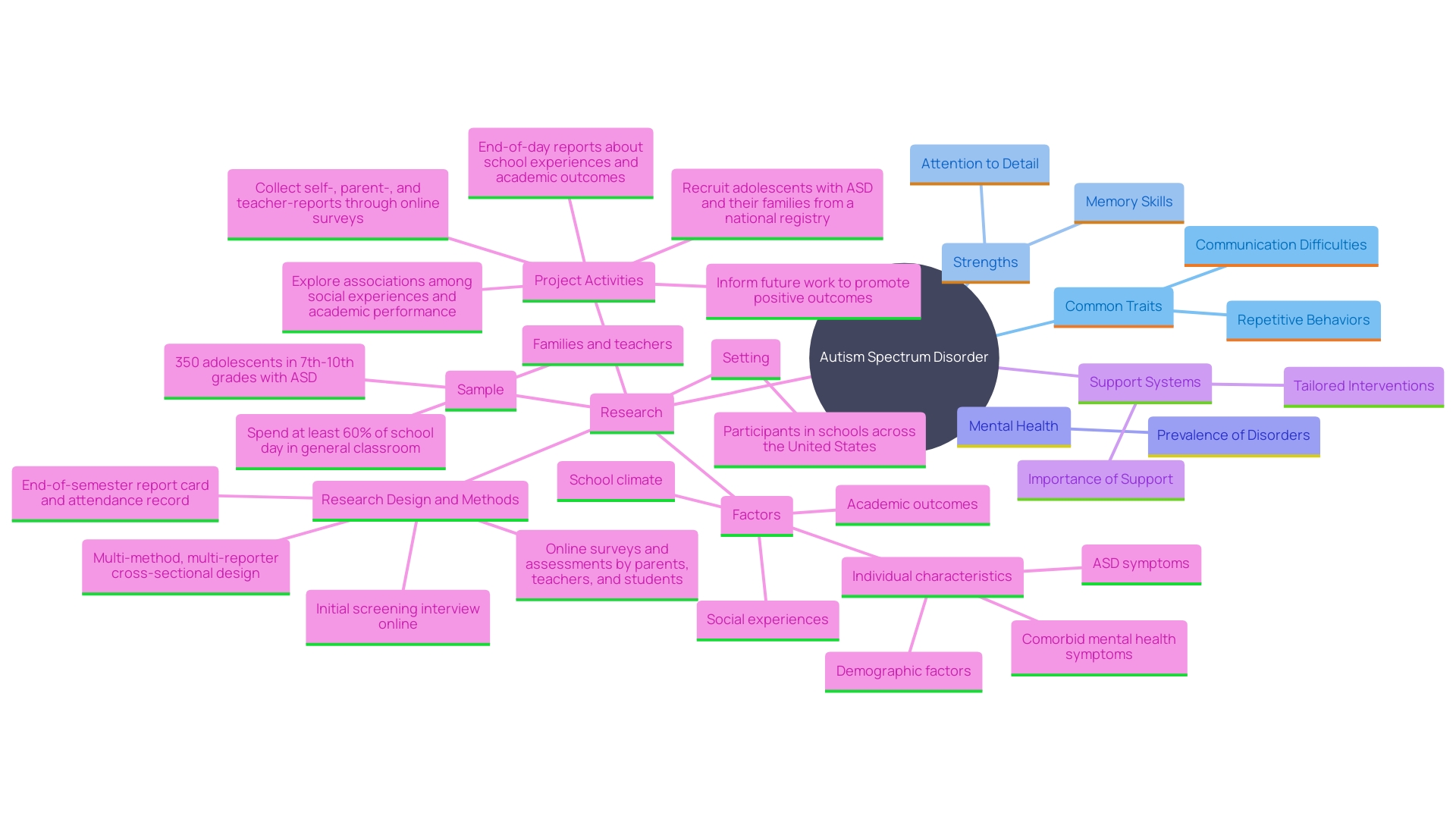
Social Interaction Challenges
One of the hallmark features of Autism Spectrum Disorder (ASD) is difficulty in interpersonal interactions. Individuals with ASD often struggle to comprehend interpersonal cues, such as body language and tone of voice, making it challenging to form and maintain relationships. They might prefer solitary activities or find group settings overwhelming, leading to potential feelings of isolation. Evidence indicates that developmental interventions can greatly enhance interpersonal exchanges in interactions with caregivers and others. Naturalistic developmental behavioral interventions, in particular, tackle fundamental challenges related to autism, especially issues with interpersonal interactions.
Emerging research emphasizes the significance of early intervention customized for very young children with communication challenges. For instance, a recent study demonstrated that toddlers with early signs of autism who received early, developmentally appropriate, and family-empowering intervention had greater access to support that directly addressed their interaction difficulties. This approach is more specifically tailored to their needs than other methods. Moreover, creative evaluation techniques, like tablet-based games to gauge literacy skills, have demonstrated potential in opening educational and community opportunities for nonspeaking autistic persons.
The significance of such interventions is highlighted by the increasing amount of evidence indicating that mental health disorders, including depression and anxiety, are more prevalent among autistic people compared to the general population. This underscores the need for integrated care approaches designed to assess and treat various aspects of health and well-being in people with neurodevelopmental conditions. By tackling these social interaction challenges early and effectively, we can pave the way for better long-term outcomes for people with autism.
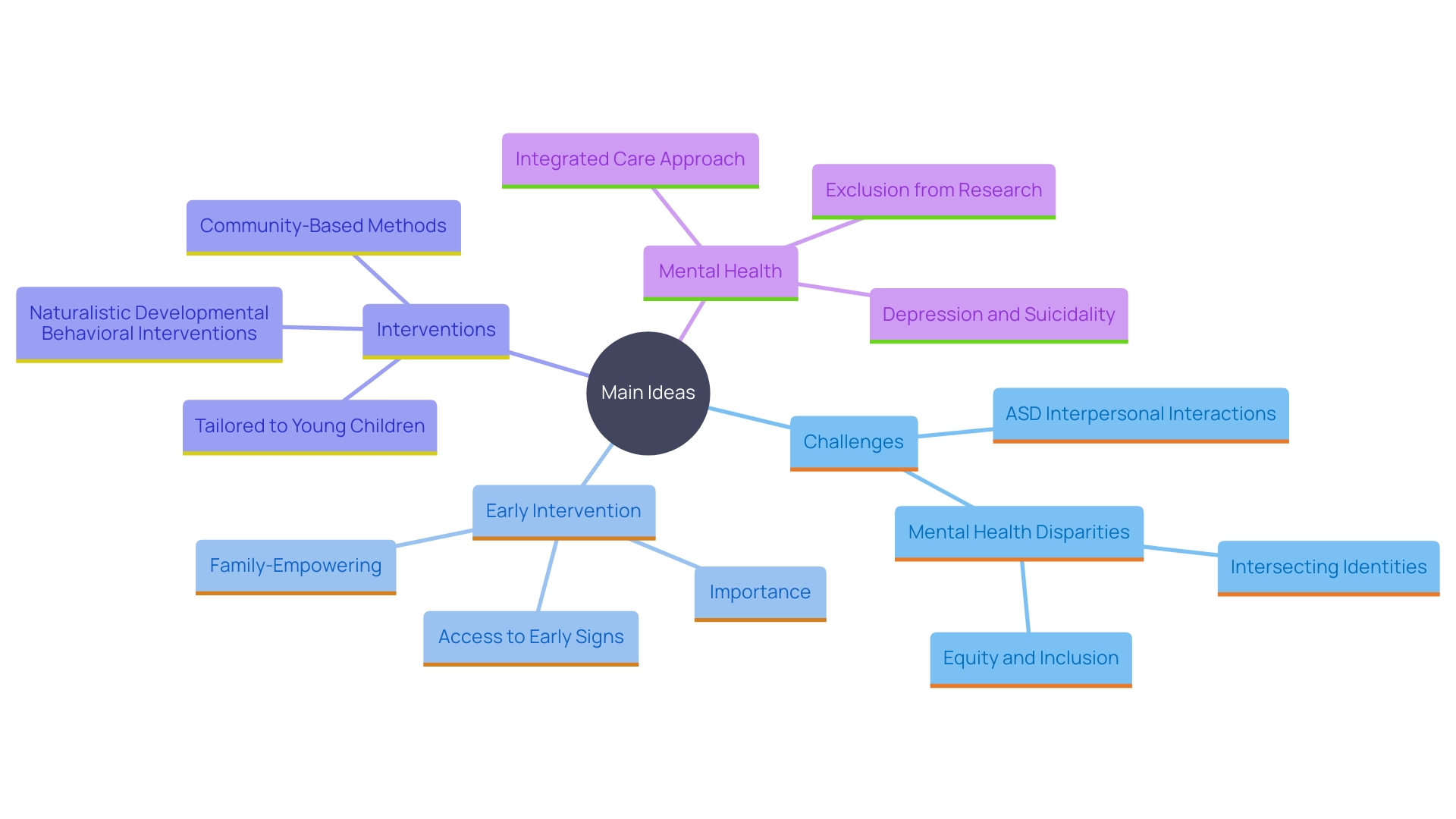
Communication Difficulties
Communication challenges are commonly experienced by people with Autism Spectrum Disorder (ASD), spanning from limited speech to difficulties in initiating or sustaining conversations. According to a study by the University of Rochester, these challenges often stem from difficulties in processing and adapting to changes in speech patterns, such as variations in pitch, rhythm, and tempo. This influences how people interpret tone and meaning, making verbal exchanges more complex.
For example, the phrase “I can’t believe it” can have different meanings based on its intonation—conveying surprise with a rising tone or sarcasm with a flat tone. Grasping these nuances is essential for promoting effective exchange. Some people with ASD may utilize different ways to convey their thoughts, such as sign language or devices, to express themselves more effectively.
Recent research highlights the potential for written expression as an alternative. A study from the University of Virginia found that many nonspeaking autistic people possess literacy skills, suggesting that written methods of expression could unlock educational, employment, and social opportunities. This finding is significant as it challenges previous assumptions about the abilities of nonspeaking autistic people.
Additionally, the significance of developing strong information exchange systems is emphasized by experts. A two-day virtual workshop held in January 2023 gathered researchers, professionals, and people with lived experience to discuss enhancing measurement and evidence-based practices. The objective is to facilitate autonomous and efficient interaction that adjusts to individual objectives and requirements as time progresses.
'Embracing these variations and supporting alternative communication methods can greatly enhance the capacity of persons with ASD to connect with others and navigate their social environments more effectively.'.
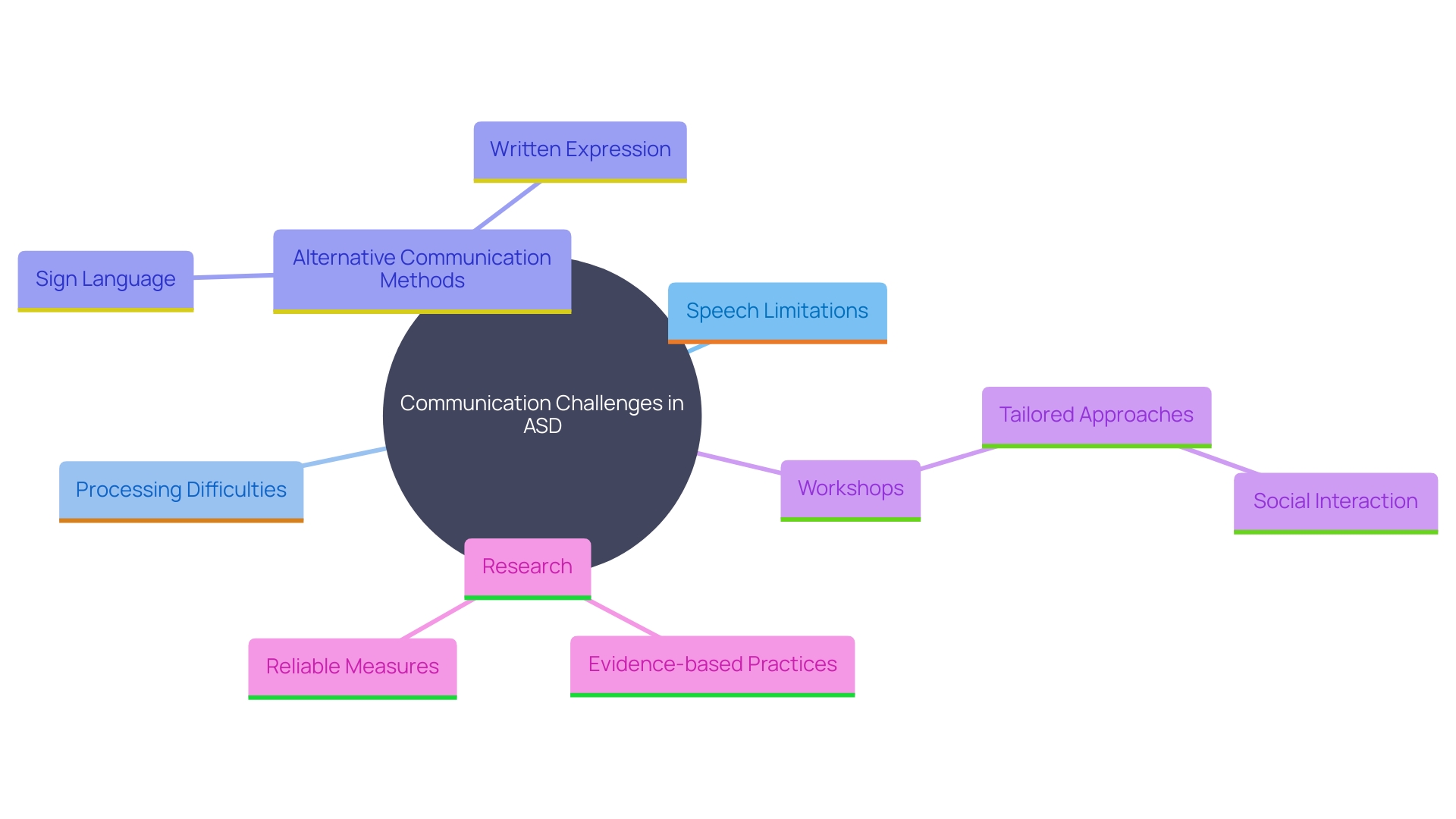
Restricted and Repetitive Behaviors
Individuals with Autism Spectrum Disorder (ASD) often exhibit restricted and repetitive behaviors, such as repetitive movements, a strong insistence on routines, or an intense focus on specific interests. These behaviors act as coping strategies, assisting people in handling stress and anxiety. Psychological approaches, like Cognitive-Behavioral Therapy (CBT), can assist in understanding and addressing these behaviors. CBT focuses on the connections between thoughts, feelings, and behaviors, providing strategies to cope with anxiety and depression. It's crucial to recognize, respect, and support these behaviors, as they are integral to a person's coping strategies. According to recent research, early diagnosis and intervention are vital, as children diagnosed with Autism by age 4 are fifty times more likely to receive necessary services. Comprehending and tackling these behaviors with compassion and suitable measures can greatly enhance the quality of life for people on the spectrum.
Sensory Sensitivities and Sensory Processing
Sensory sensitivities are a hallmark of Autism Spectrum Disorder (ASD), often resulting in heightened or diminished responses to sensory inputs like sounds, lights, or textures. These sensitivities can manifest across various sensory modalities, including sight, sound, touch, taste, and smell. For example, some people might find bright or flashing lights overwhelming, while others may have a strong aversion to certain textures or sounds. Grasping these sensitivities is essential for developing settings that accommodate personal sensory needs and preferences. This tailored approach can significantly enhance engagement in daily activities, whether at home, school, or within the community. Research emphasizes the importance of capturing sensory experiences from the perspective of autistic individuals themselves, rather than relying solely on observations from parents or professionals. By doing so, we gain deeper insights into their unique sensory world, enabling more effective and empathetic support.
Diagnosis of ASD
Diagnosing Autism Spectrum Disorder (ASD) requires a thorough evaluation process that includes both developmental history and behavioral assessments. Early diagnosis is vital as it enables timely interventions, which can significantly improve outcomes for those on the spectrum. Research consistently shows that early treatment, such as behavioral therapy, yields better long-term developmental results for children. For example, customized treatment methods started early can improve interpersonal skills and adaptive functioning, essential for better integration into daily life and educational environments.
Recent advancements in technology, such as AI analysis of retinal photographs, are promising tools for early detection of autism, potentially even measuring its severity. This innovation could revolutionize the diagnostic process, shortening the typically lengthy journey to a diagnosis, which averages around three years from the first concern of developmental delay.
As highlighted by the Autism Community in Action (TACA), early intervention is critical during the initial neurodevelopmental period when therapeutic impacts are most profound. Such timely interventions can mitigate the core challenges of autism, particularly difficulties with social communication, and improve long-term outcomes.
Dr. Christiana Dodd Butera from USC Chan emphasizes that early identification allows for more effective, personalized therapeutic strategies, leading to better developmental trajectories. These insights are supported by various studies showing that early, intensive behavioral interventions can significantly benefit young autistic children.
Treatment and Interventions for ASD
Effective treatment for Autism Spectrum Disorder (ASD) often involves a combination of therapies customized to the person's needs. Behavioral therapies, such as Applied Behavior Analysis (ABA), are instrumental in helping individuals develop essential skills. Data indicates that developmental programs enhance interpersonal exchanges with caregivers and tackle fundamental issues related to autism. For example, naturalistic developmental behavioral interventions have demonstrated significant positive effects on adaptive behavior, language, play, and interpersonal communication.
In addition to ABA, other interventions include speech and language therapy, occupational therapy, and social skills training. These therapies aim to enhance the quality of life for people with ASD by targeting specific developmental areas. It's important to note that early intervention is crucial; pediatricians often recommend early intensive behavioral interventions, which can be highly effective for young children.
A recent study expanded on the work of psychologist Donald Olding Hebb to explore the underlying mental functionalities of ASD, shedding light on the intricate connections within the brain. This research highlights the importance of understanding the neurodevelopmental aspects of autism to develop more effective treatments.
Furthermore, the Interagency Autism Coordinating Committee (IACC), a federal advisory committee, works to accelerate progress in autism research and services. Their efforts help improve coordination and communication across the federal government and the autism community, ensuring that the latest findings and best practices are implemented in interventions.
Overall, the combination of behavioral, developmental, and therapeutic interventions, supported by ongoing research and coordination, plays a pivotal role in improving outcomes for individuals with ASD.
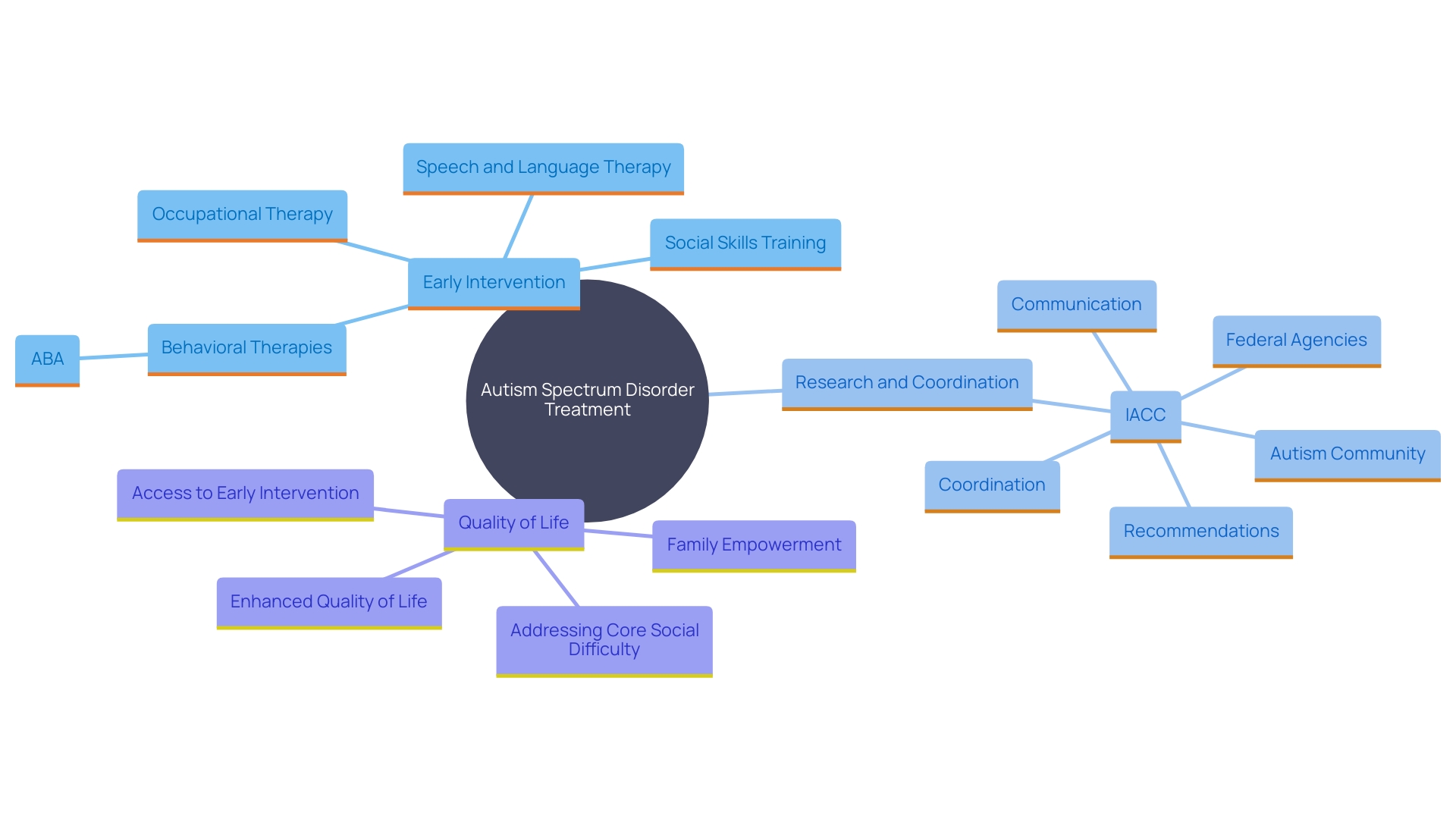
Conclusion
Autism Spectrum Disorder (ASD) encompasses a diverse range of challenges that impact social interaction, communication, and behavior. Each individual's experience is unique, highlighting the necessity for tailored approaches to support those on the spectrum. Early diagnosis and intervention are critical, as they can significantly enhance the quality of life and developmental outcomes for individuals with ASD.
The key characteristics of ASD, including social interaction difficulties, communication challenges, and restricted behaviors, underscore the importance of understanding and embracing the diverse capabilities of individuals with this condition. Comprehensive support systems, such as Cognitive-Behavioral Therapy (CBT) and Applied Behavior Analysis (ABA), are vital in addressing these challenges, facilitating better social communication, and promoting adaptive functioning.
Recognizing and addressing sensory sensitivities is also crucial for creating supportive environments. By tailoring these spaces to meet individual sensory needs, engagement in daily activities can be greatly improved. Furthermore, advancements in diagnostic processes and early interventions offer promising avenues for enhancing the lives of individuals with ASD.
Overall, a collaborative approach that combines research, tailored therapies, and community support is essential for empowering individuals with ASD and fostering their well-being. By prioritizing early intervention and understanding the unique needs of each person, it becomes possible to navigate the complexities of ASD more effectively, ensuring a brighter future for individuals on the spectrum.




